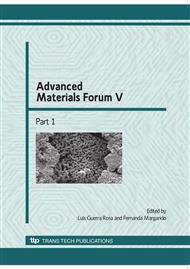p.585
p.592
p.597
p.605
p.612
p.618
p.624
p.631
p.637
Secondary Carbide Precipitation in Low Silicon Hot Work Tool Steels
Abstract:
A reduction from 1.0 to 0.3%Si has recently been shown to improve mechanical properties of H11-type hot work tool steels. The present paper shows that an important improvement in toughness can be explained by the effect of Si content on the precipitation sequence of secondary carbides during tempering after quenching. Carbide particle distributions were observed and identified by electron microscopy, allowing to relate the effect of Si on mechanical properties directly to its effect on cementite and subsequent alloy carbide formation during high temperature tempering.
Info:
Periodical:
Pages:
612-617
Citation:
Online since:
January 2010
Keywords:
Price:
Сopyright:
© 2010 Trans Tech Publications Ltd. All Rights Reserved
Share:
Citation:


